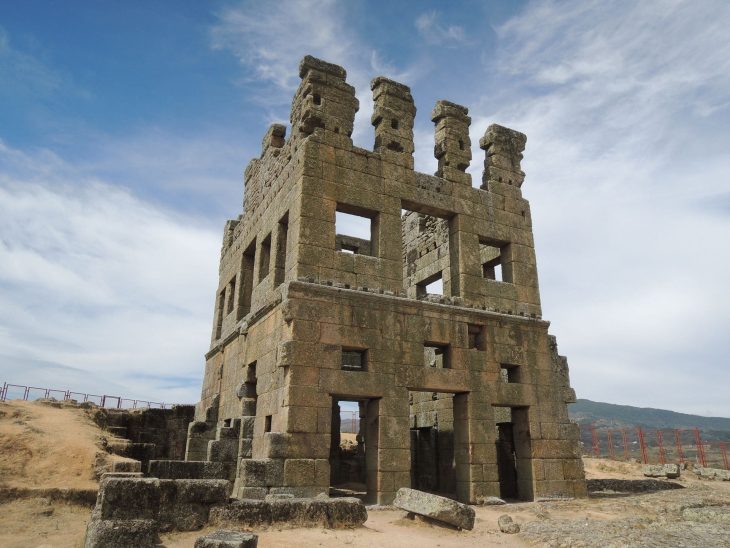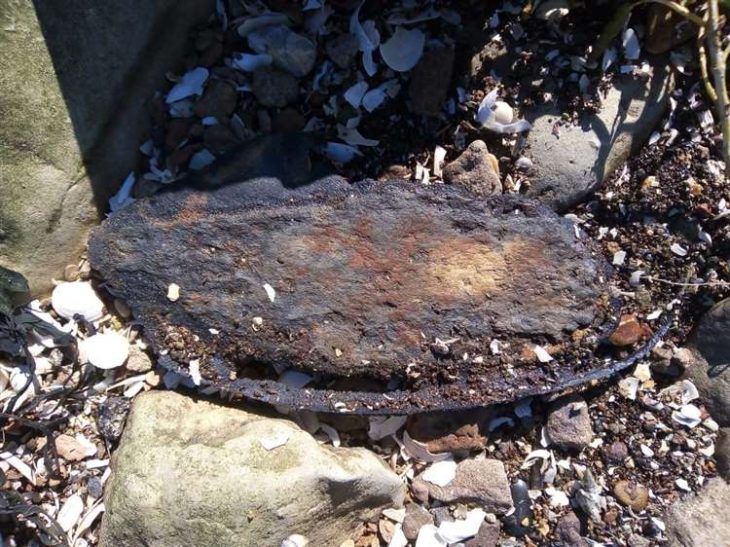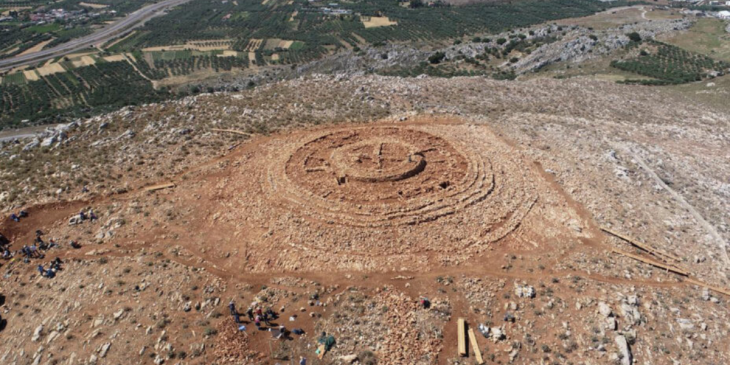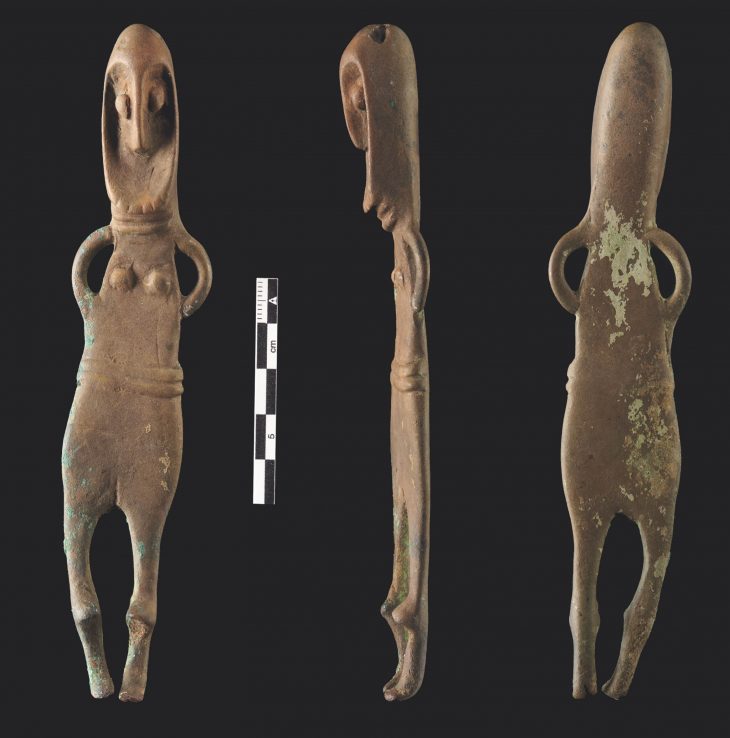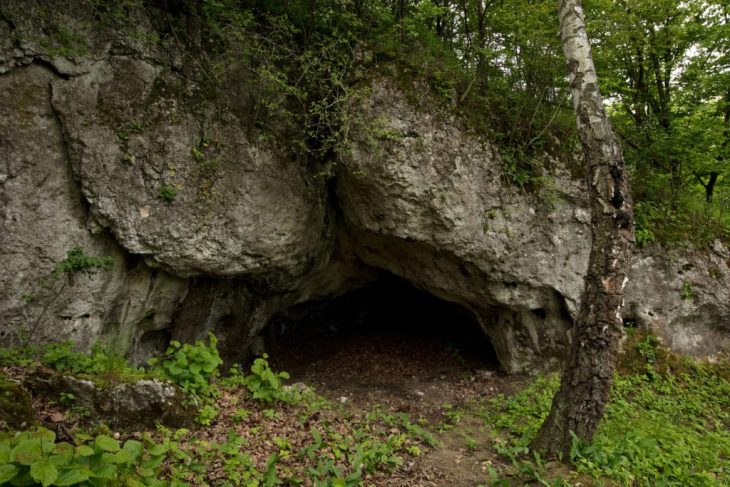Jamestown, Virginia, was founded in 1607 and was the first English permanent settlement in North America. The region has been the focus of numerous historical and archaeological investigations, such as the one conducted recently by Prof. Markus M. Key and Rebecca K. Rossi, who sought to ascertain the origin of the tombstone of the black “marble” knight of Jamestown.
The Jamestown’s black “marble” tombstone was erected in honor of a knight but the origins of the stone and the history of the knight were both unknown to historians and archaeologists. The stone dates from 1627 and is the oldest tombstone of its kind in the USA’s Chesapeake Bay area.
The tombstone is covered with carved depressions (once filled with brass inlays) that depict the outline of an English knight with a sword and shield. It was first put in place in 1627, where it remained until the 1640s when the church’s southern entrance was built. Broken by the time it was rediscovered in 1907, the slab has been repaired and relocated to the chancel of the present-day Memorial Church.
The tombstone has undergone innumerable inspections and analyses; however, Rebecca K. Rossi and Professor Markus M. Key conducted a fresh investigation, which was just released in the International Journal of Historical Archaeology. They wished to determine the origin of the black polished limestone, commonly mis-termed “marble” that was used for the Jamestown knight’s tomb.
What they discovered was unexpected, Professor Key said.
Researchers used fossils found inside the stone to uncover a type of microfossil called foraminifera. The specific origin and time of these foraminifera species may become clear with their identification. Microfossil analysis can therefore be used in forensics to pinpoint geographic locations and is also utilized in geological studies to fine-tune the dating of rock layers.
There were six species of foraminifera identified. Many existed in what is now Belgium during the Carboniferous Period, specifically during the Viséan Age, and Middle Mississippian Epoch (which lasted from about 345 to 328 million years ago).
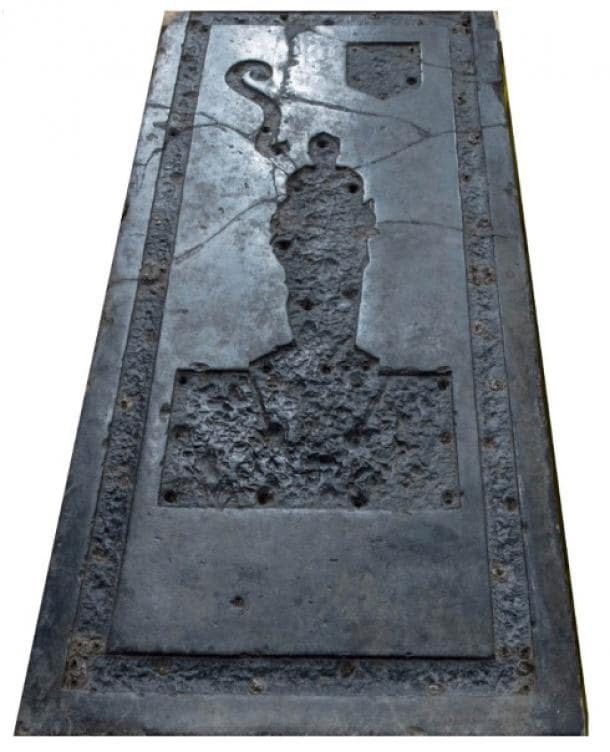
This shows with certainty the stone and the microfossils it contains do not actually come from the Chesapeake Bay, the USA or even North America.
According to the latest findings, the knight’s tombstone had to have been transported from Europe by sea. Based on historical evidence, it is more likely that this originated in Belgium and was shipped to London before being delivered to Jamestown, USA. From Roman times until the present, Belgium has been recognized as the source of this Lower Carboniferous “black” marble for centuries.
“It was particularly popular among the wealthy in England during Knight’s life,” the professor said.
“Little did we realize that colonists were ordering tombstones from Belgium like we order items from Amazon, just a lot slower.”
Of the two knights who died in Jamestown in the 17th century, one was Sir Thomas West, Virginia’s first resident governor, who died in 1618 while crossing the Atlantic to Jamestown.
The second was Sir George Yeardley, who was born in Southwark in 1587 and reached Jamestown in 1610 after surviving a shipwreck near Bermuda. Knighted on going back to England in 1617, he was appointed Governor of Virginia in 1618 and returned to Jamestown where he held this post until 1621. He resumed the post in 1626 and died in 1627.
The tombstone is the possibility it belonged to knight Sir George Yeardley, according to historical records.
International Journal of Historical Archaeology
Cover Image: Jamestown Rediscovery, Preservation Virginia/International Journal of Historical Archaeology




